Being able to pass a volleyball is one of the most important skills you will ever learn as a volleyball player.
Sure it’s great being able to kill a ball every time you spike it, or be able to set the ball with such style and proficiency that people think you are just blessed with magic hands.
But the thing that many people fail to realise is that without that first pass or dig being good enough for the setter to reach none of these things are possible.
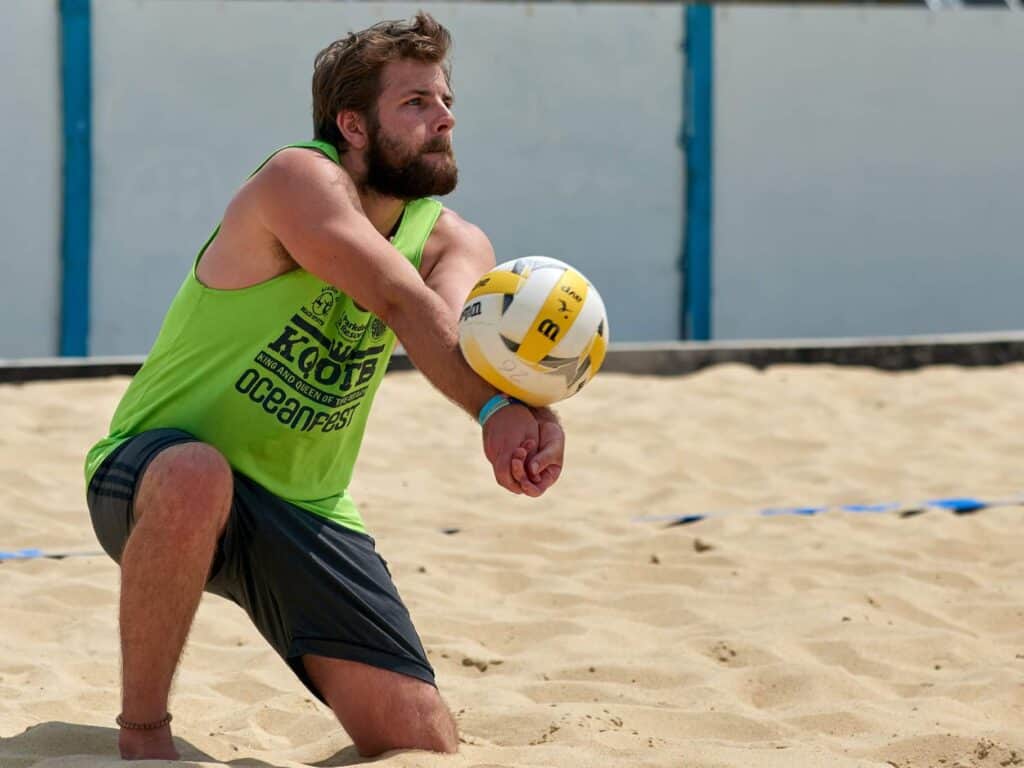
Whether a complete beginner or seasoned professional you will still see people making passing errors and whichever team digs or passes the ball better is often the victor.
Being a good and consistent passer really is that crucial.
So with that being said just how do we dig a volleyball?
To pass a volleyball we want our feet shoulder width apart with our knees bent ensuring our weight is over our toes, with our palms open and facing the sky place one on the other and fully straighten our arms. to perform the pass we keep our arms locked and extend our knees and body towards the ball as it contacts our platform.
Now I appreciate that all of the above steps will be a lot to take in if you’re a complete beginner.
If you have some experience hopefully it’s not sounding to foreign to you.
If you are a beginner it’s important you don’t let this overwhelm you and you only focus on a couple of things each time you practice.
My suggestion would be bookmark this page and then you can refer back to it before each session.
You will have noticed from the above that there are actually quite a few different key things to consider when passing a volleyball.
I feel it is always important to not only understand what to do but why we do the things we do.
By better understanding the why, I find it helps learn and comprehend the how.
Table of Contents
Pass a Volleyball With Your Feet Shoulder width apart.
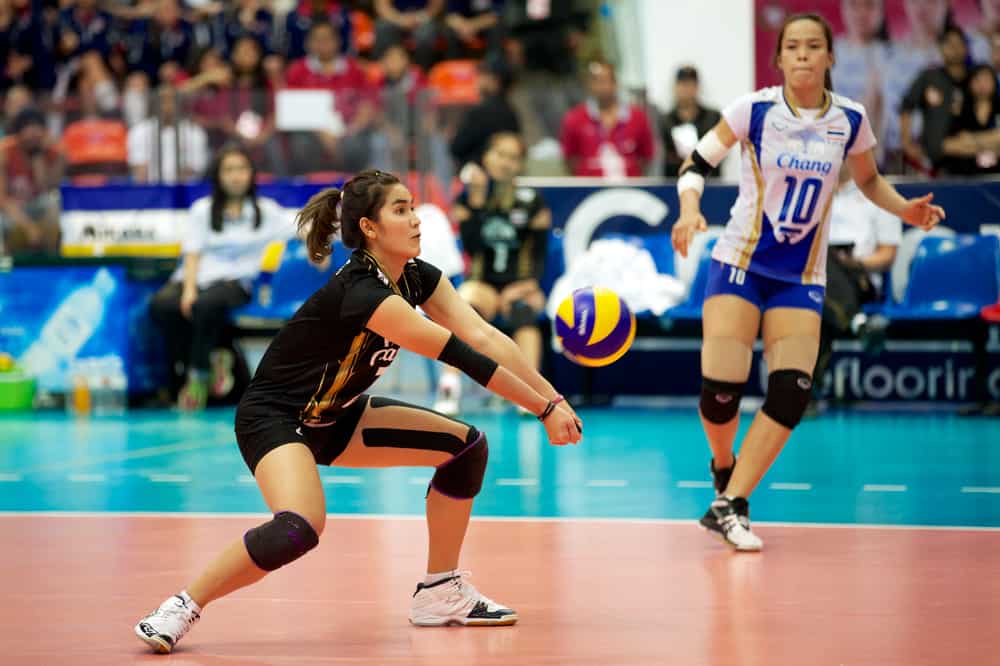
It may surprise you to find out that how successful we are as a passer has a lot to do with a feet position and how we set ourselves up for the pass.
If we have a very narrow stance when passing, meaning our feet are close together,
if the ball is a little bit further away from our body then we first thought, it will mean we will have to stretch further to reach the ball which leaves us very unbalanced.
Alternatively if we had a very wide stance and the ball was slightly further away, whilst we would likely have good stability we would be very immobile, this would make our job as a passer much more difficult.
By setting ourselves up with our feet just over shoulder width apart it ensures that we keep the gravity over the centre of our bodies which makes us much more balanced. This also offers us a lot of freedom when it comes to making adjustments to reach a ball that is further away.
Ensuring we are balanced and have a firm foothold on the ground makes passing the ball much easier.
Pass a Volleyball With Bent Knees
The next important step is ensuring whenever we pass a volleyball that we have a slight bend in the knees.
This is extremely important for multiple reasons.
Passing accuracy
The first reason being, as stated before when we pass a volleyball a lot of the momentum that propels the ball forward comes from use extending our legs and body into the ball.
Not from swinging our arms.
You will often find that if a beginner is trying to pass and the ball it either goes straight up above their own heads or worse, behind them slightly, this will be because they are swinging their arms to pass the ball rather than stepping into the pass and playing the direction they want the ball to travel.
By having that slight bend in our knees it allows us to extend them and propel our platform forward to contact the ball and ‘bump’ it in the direction we want to pass.
Balance
Another key reason to keep our knees bent slightly is to ensure we have optimum balance.

In fact I can actually prove this to you right now (Providing you have someone else near you)
Stand up ensuring your legs are straight and fully extended, once standing in the aforementioned stance, have someone gently push you (optimum word being gently, we aren’t out to hurt each other).
Now repeat the test with your knees slightly bent, I bet you were surprised with just how much of a difference a slight bend in the knees can have on your balance.
That additional balance gained by bending our knees slightly just ensures that wherever we need to move to reach the ball, we are balanced, in control and ready to pass.
Keep Your Weight Over Your Toes When Passing a Volleyball
Now admittedly this point does slightly tie into the above but as it focuses on a slightly different component so I felt it warranted its own sub heading.
When we bend our knees we want to ensure that our knees go slightly past our toes.
Now what I mean by this is, if you were to stand up and bend your knees slightly, when you look down your knees should go just past your toes.
What this does is force our weight onto our toes.
I’m sure you have all heard the saying ‘keep on your toes’, this saying is sometimes said in movies during intense scenes where the protagonists need to keep and eye out and be ready for anything.
Well there is actually a reason this saying is used.
By keeping our weight on our toes it allows us to have the quickest reaction and also helps us stay balanced.
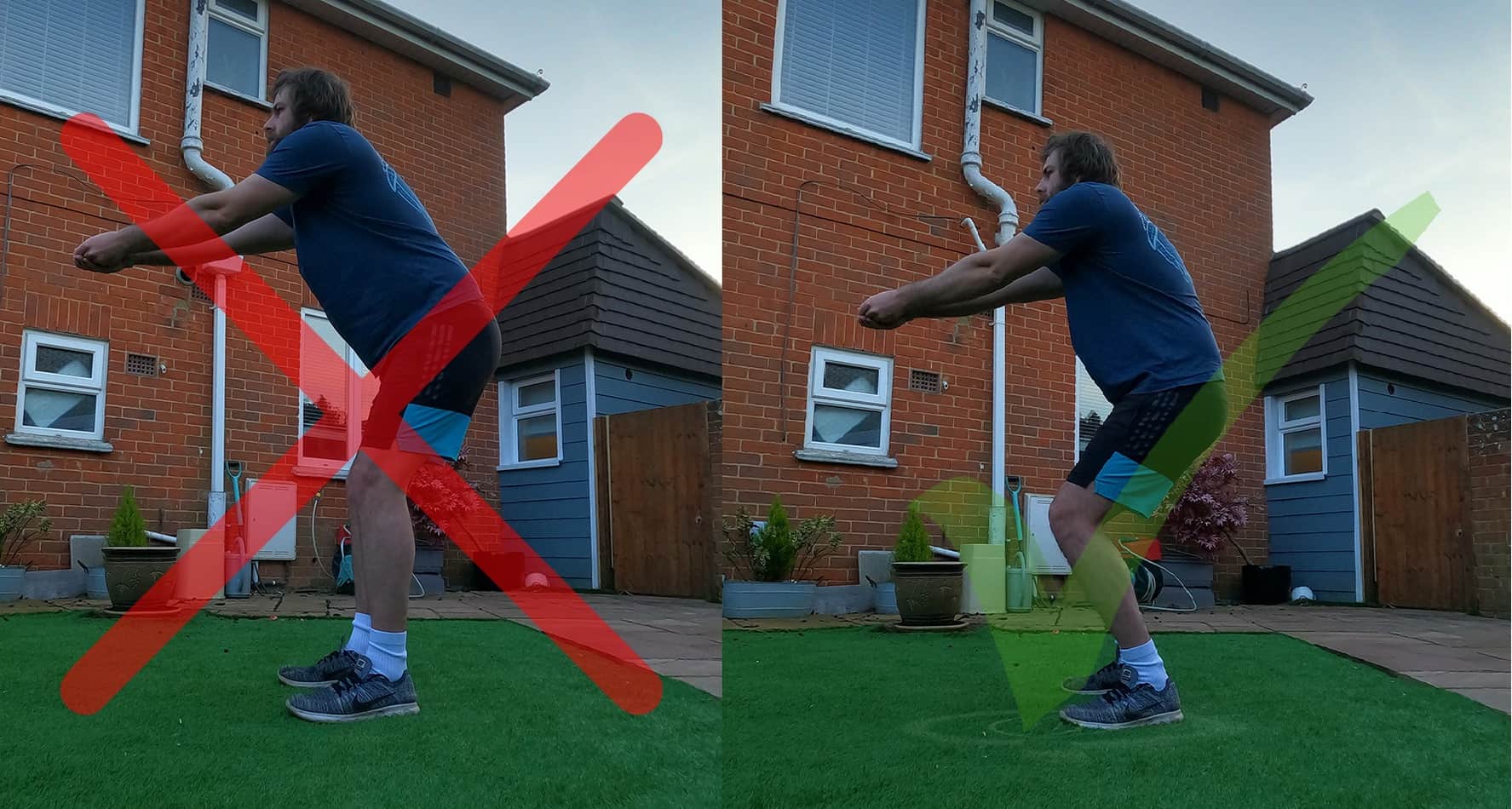
Think of a runner about to start a race, they will be leaning forward with their weight over their toes, not standing casually with their weight on their heels.
If when passing a volleyball we keep our weight over our toes it will allow us to react much quicker.
This is obviously advantageous as it allows us to reach difficult balls or just ensure we get into position much sooner giving us time to set up a good platform.
Alternatively if we allowed our weight to shift backwards over our heels it would render us very immobile and cost us precious time.
Keep your weight over your toes!!!
Trust me it will blow your mind just how quick you will feel around the volleyball court next time you play if you haven’t previously done this.
Perfect Platform for Passing a Volleyball
Now it’s true there is no such thing as a perfect passing platform.
Ultimately if it’s comfortable for you and produces a consistent result then it doesn;t matter if you look like a model from a textbook on passing a volleyball.
If you however, if you are completely new to volleyball you may not know where to begin.
Fortunately there is a very easy way to get your forming a good platform to start out with.
In order to form the platform you first want to straighten both arms straight out in front of you with your palms facing the sky or ceiling.
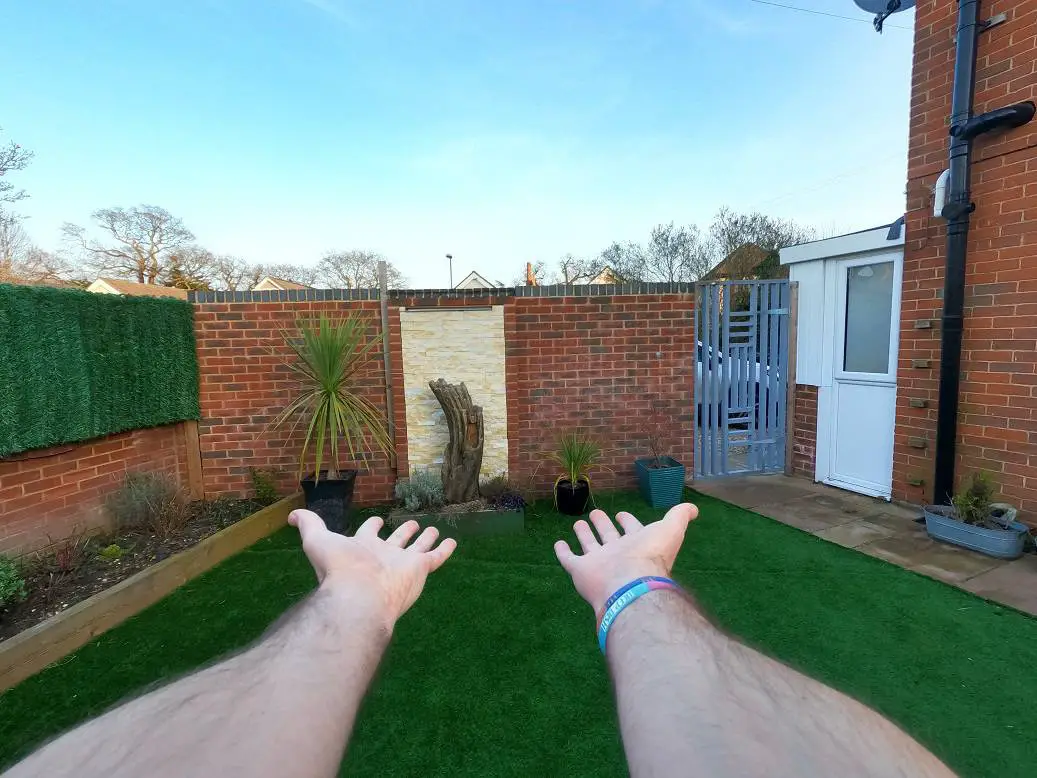
From this position place one hand on top of the other and form a triangle shape with your fingers. If done correctly your hands with the use of your thumbs will form a W shape.
It should look something like the below image.

Once complete simply folds your thumbs over to the top of your fingers to leave yourself looking like the below.
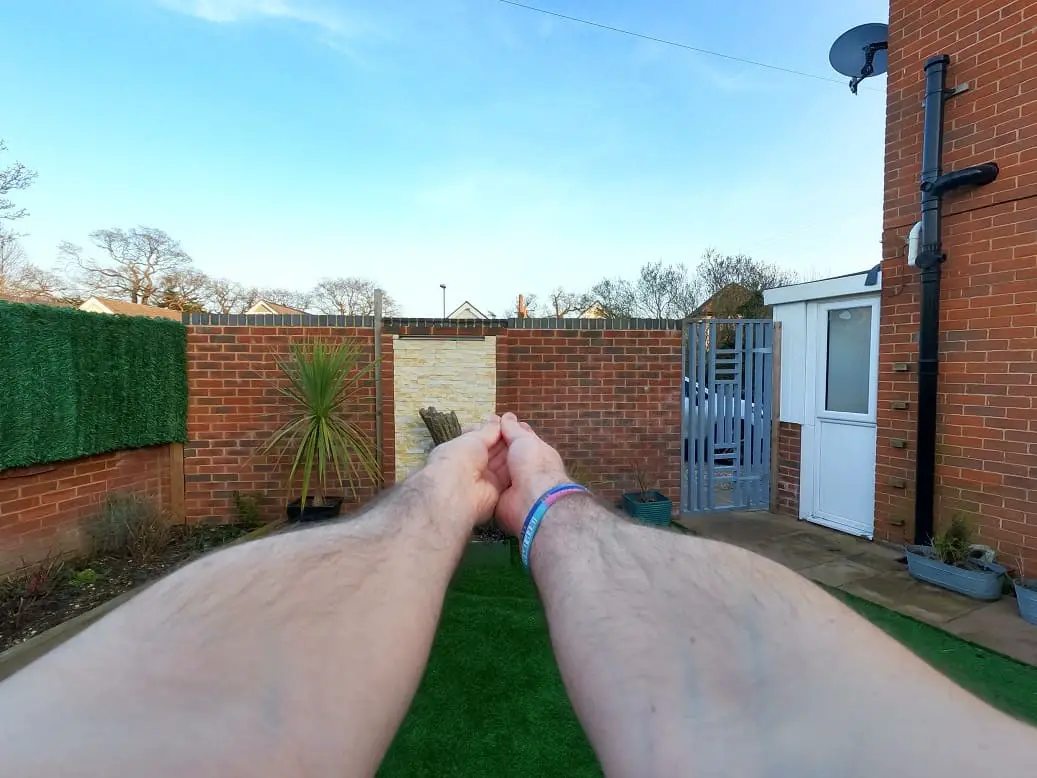
Lastly push your wrists towards the sky slightly as this will help lock your arms to ensure they are rigid and evenly lined up.
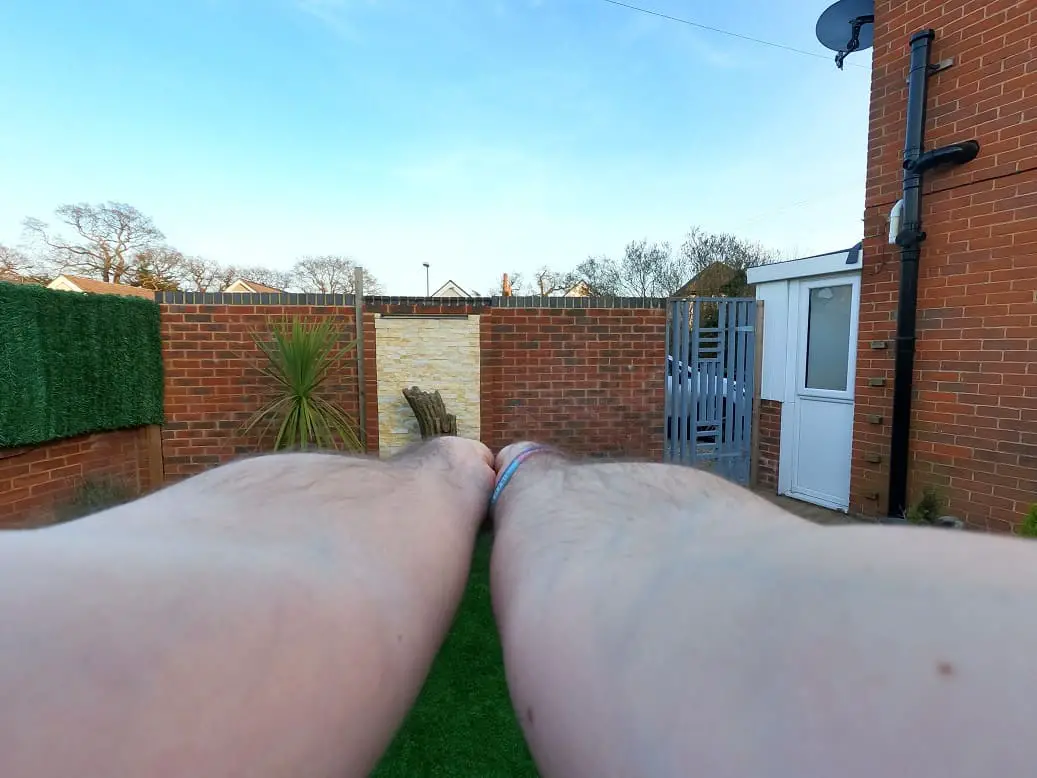
Having a good solid platform is vital when passing the ball as any imperfections will be reflected in your pass.
If for example your arms have a slight bend in them, the ball will travel upwards rather than forwards in the desired direction.
Alternatively if your arms aren’t quite level you may find when passing the ball will travel left or right depending on which arm isn’t level with the other.
By using the above method to form your platform it ensures you are always ready to pass or receive the ball.
I would suggest practicing getting into this position as quickly and conveniently as possible as obviously during a game situation you don’t always have much time to form your platform and pass the ball.
Pass the Volleyball With Your Body Not Your Arms
When reading this title if you don’t have a great deal of experience in the sport you may be looking at this scratching your head.
Of course when you pass the volleyball you want to use your arms.
But what I actually mean by this is that you need to use your body and momentum to propel your arms into the ball.
You don’t want to keep your body and just swing your arms, by just swinging your arms you are sending the energy you give the ball upwards rather than forwards in the direction desired.
If instead when passing we extend and propel our bodies forward into the ball whilst keeping our arms relatively still and locked in that rigid platform, the ball will be ‘bumped’ in the correct direction.
It may sound and feel a bit foreign to start with but I promise if you are someone who has struggled with the ball often going straight up or even behind you when passing, this is likely the culprit.
Keep Space Between Your Arms & Armpits When Passing a Volleyball
If you have followed the above steps to the letter you may feel with your arms in this position you feel a little bit stuck and locked in place.
Well don’t worry freedom is on the way.
Whilst its important to keep your arms relatively rigid it doesn’t mean you have to be restricted with your movement.
When playing volleyball the ball will very rarely travel perfectly towards you, this means we must make little micro-adjustments on the fly.
Obviously if our arms are tight to our body and locked in place this can cause some issues.
To get around this we want to ensure there is space between our arms and our armpits. By creating this space it allows us to move our platform more freely to ensure we get our shoulder and platform behind the ball regardless of where it is travelling.
If you are confused about what I am trying to explain you can refer to the below picture of me in the stance.
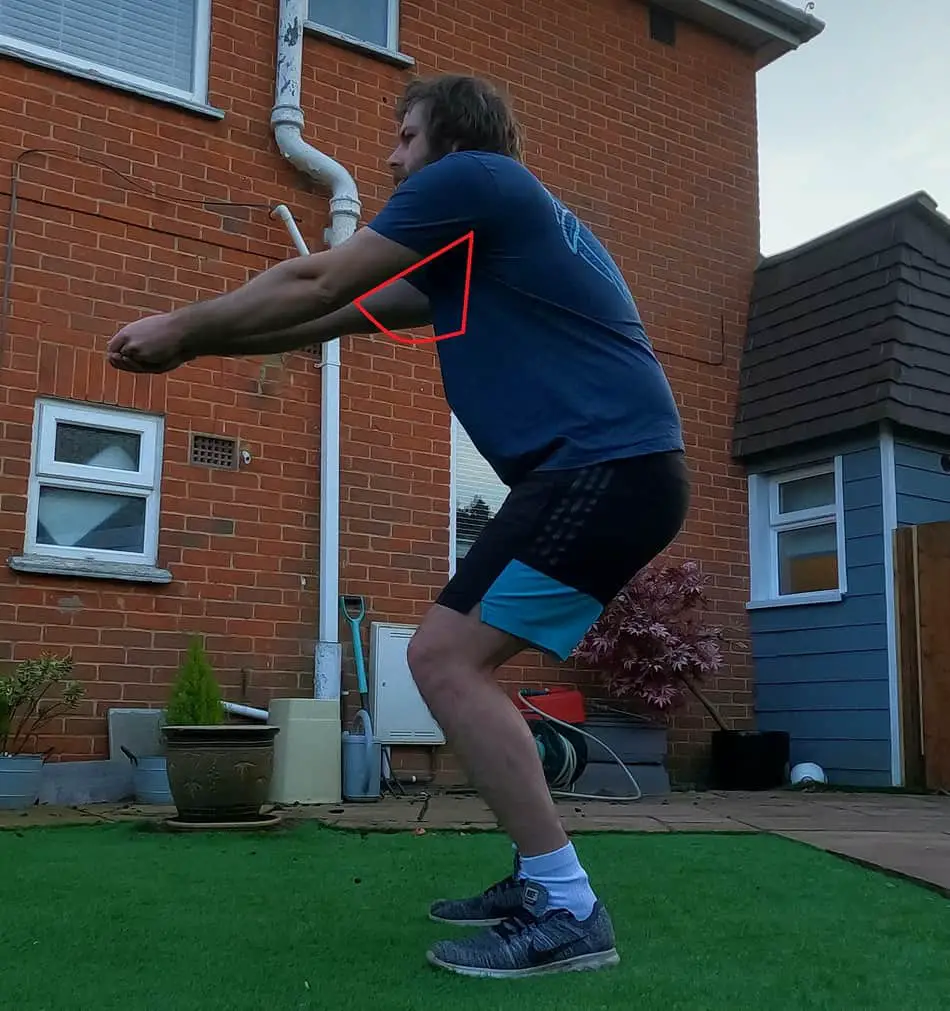
Moving to pass the volleyball
As already stated when passing a volleyball you want to always try to have your body behind the ball with your shoulders facing your target.
As your opponents will be trying to win the point they will obviously aim to hit the ball where you are not currently standing so this means you must move quickly and efficiently to get your body back behind the ball.
It is very important that you move around the volleyball court in the correct way, otherwise this can lead to the following problems, not getting to the ball in time, being off balance when you pass, your pass does not go where you wanted it to?
So how do we maneuver around the court the correct way?
Shuffle Step (Side step) in Volleyball
Well we want to utilise the shuffle step or side step as brilliantly demonstrated by the below tennis player (Pro tip we can learn a lot from tennis players movements ;))
When using the shuffle or side step in volleyball it is important that our eyes remain at the same level throughout our movement and during our pass.
What I mean by this is it is much quicker to stay at the level needed to perform the pass and then pass the ball properly with good form instantly,
than it is to stand up, run to the required position, get back down into the correct passing form and then execute the pass.
So remember to make sure when you shuffle step you do not let your body stand up, be on your toes and move across the court at the same level.
Don’t Cross Your Legs When Moving in Volleyball
A common mistake I see a lot of beginners make when they first start is allowing their legs to cross over when moving or running to chase down a ball.
Allowing your legs to cross can cause a variety of issues when trying to pass the ball.

The main issue is that it causes inaccuracy as this instantly makes the passer off balance and unable to use the body weight and momentum to pass the ball.
And having read the above, you now know what happens when we can’t use our body for momentum.
Yep, that’s right we end wildly swinging our arms and leave the accuracy of our pass down to chance.
Crossing our legs is a big no no and should be avoided at all times where possible.
Keep the Ball On Our Side of The Net
When passing the ball one of the worst things you can do is overpass the ball and set up one of the opposition players for a free spike.
Now I get it when you are running towards the net to pass the ball, sometimes your momentum carries through and you put a little too much sauce on the pass.
Fortunately there is actually a little trick you can do to help with this and ensure your pass is always on the money.
When passing the ball if you are required to play a pass in which your body is at an angle to the net it is important to stagger your feet and put your body weight through your leg outside leg (The leg that is closest to the outer line of the court on the side in which you are playing)
This technique is actually useful in preventing quite a few different passing errors that could occur.
The first is as you guessed from the above, it forces us to ensure when we pass our shoulders are facing our target and we aren’t going to overpass the ball either straight over the net to your opponents or straight out of bounds.
The next issue we are hoping to prevent is that when we move towards the net to pass the ball we want to ensure the momentum from moving to the passing location doesn’t continue causing us to fall into or towards the net or be off balance when passing the ball.
How to Dig a Volleyball as an intermediate
So you have the basics down and think that you are moving on to that next level.
You want the secret sauce that takes you from pretty good to an absolute passing machine.
Well I would like to refer you to the above as really the technique never changes however there are some small variations that will help you dig more balls and pass with a better degree of accuracy.
Preparation to dig a volleyball
If you have moved past the beginner stage chances are you are playing with better opponents, this may mean that they attack or serve the ball from a higher contact point and also hit the ball a lot harder, this means we must be ready to receive the ball and make a quick decision on how to best receive the ball.
The above steps are to teach the fundamentals and basics on how to pass as a beginner and hopefully teach the importance of a good platform and low centre of gravity,
however, if we adopt the position detailed above and the attacker hits the ball very fast or slightly off centre from where we position ourselves,
we may not have time to react and get our arms in the correct form, this is why we must adopt a slightly different stance.
When playing against stronger opponents we want to stand the same as above in terms of bent knees with feet just over shoulder width apart in a nice low active position.
However, we want our arms slightly spread so we can put our platform together at a moments notice in the required position.
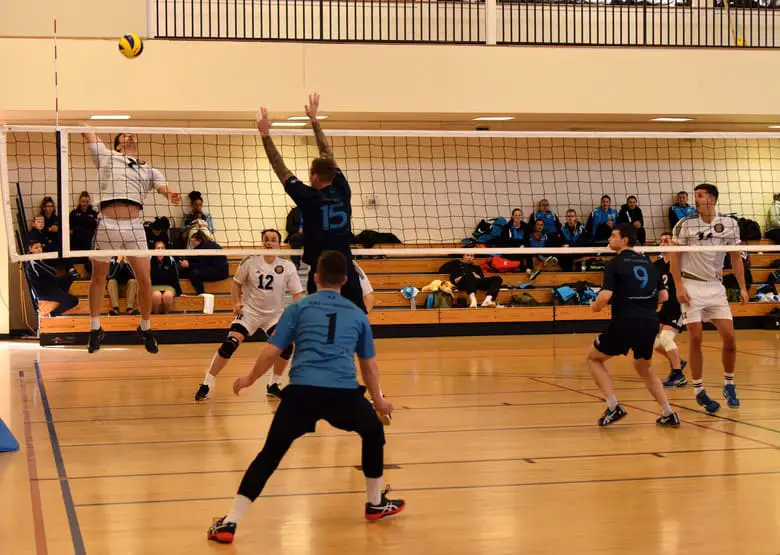
If we already have our platform loaded out and the opponent hits the ball to our left or right we often won’t have time to move our feet, as such we must move our arms to meet the ball.
With this being said we don’t want to swing our arms to the target as this is slow and will lead to inaccurate passes.
Instead we want to put either our left or right arm (Whichever one is closest to the ball) out in the path of the hit and then bring just one arm (the arm that is the opposite side to where the ball has been hit) to meet the other arm and form our platform.
This allows us to have a chance of digging (or picking up) the ball even if we don’t have time to properly form our platform.
It is important to note that even in this situation we still want to try and push our shoulders round the ball to ensure we create a nice passing angle back into either the setter or the centre of the court.
How to receive the ball above chest height
Sometimes the ball is just hit too high to be able to dig using the techniques mentioned above, so I know some of you will be asking
‘what do I do if the ball is head height?’
Well that really depends on whether you are playing beach volleyball or indoor volleyball as the different rules of each game make certain receiving touches illegal.
Receiving a high ball in indoor volleyball
I will start with Indoor volleyball as the rules are much clearer and generally there is a lot more leniency in the indoor game,
If this ball is coming towards you above chest height either from a high loopy ball over or a hard hit you are allowed to receive the ball using the overhead setting motion.
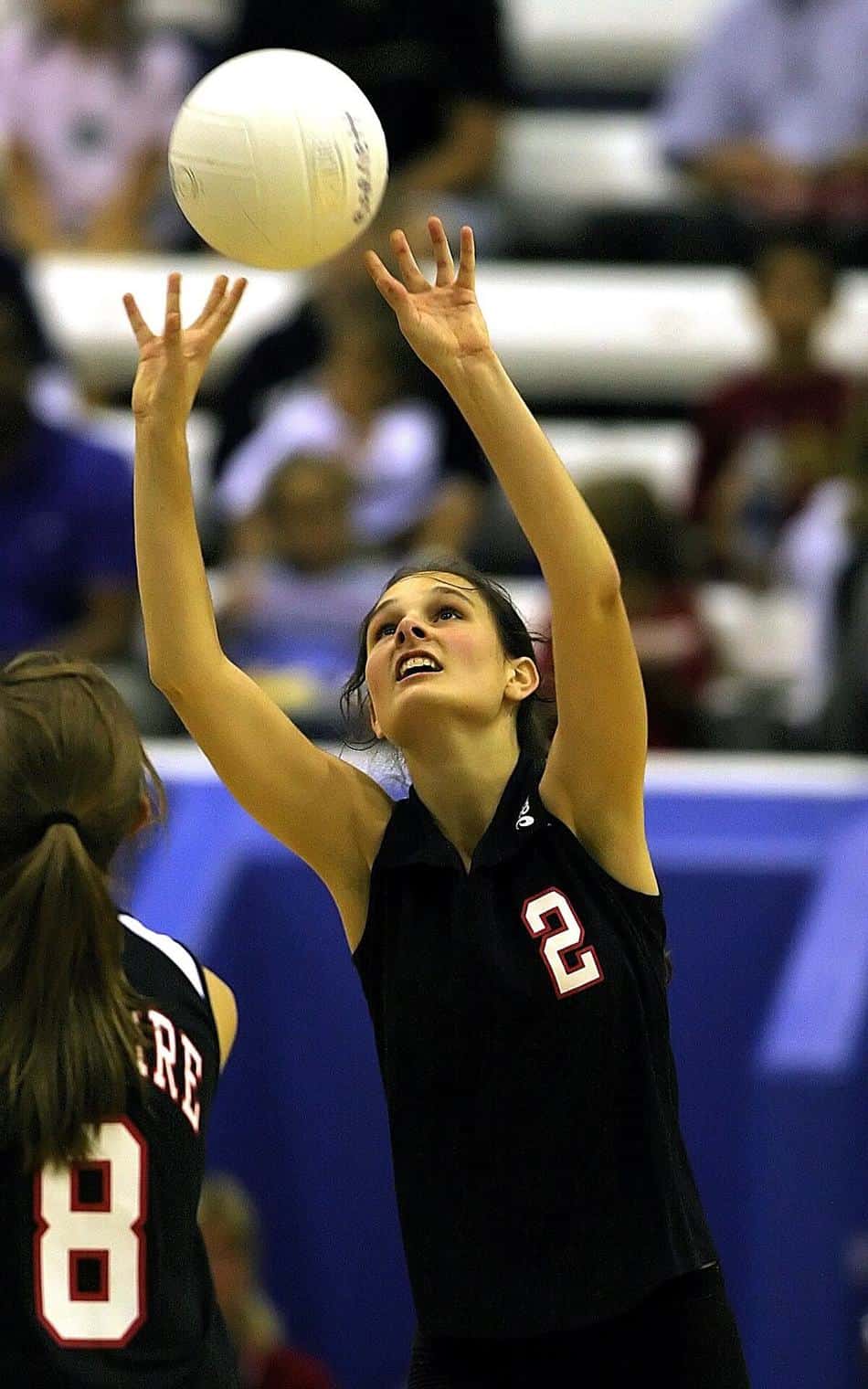
Or alternatively, you can play the ball however you feel comfortable, be that one hand, two hands together.
The way in which most players are taught is where possible (and if you feel confident doing so) always try and overhead hand set as generally this will be your most accurate pass.
However, like I said it comes down to a matter of confidence and what feels most comfortable to you.
The important thing is if the opposition are hitting the ball with a lot of power to make sure you protect your head and face and get the ball up towards the setter.
Receiving a high ball in beach volleyball
Beach Volleyball is a lot more complicated and sometimes you can do a completely legal move and still get called by a referee.
The reason for this is the rules are quite vague when it comes to receiving the ball overhead and often the decision is down to what the referee sees at the time or think they see at the time.
For example you can receive the ball using the overhead setting technique as detailed above in the Indoor volleyball section however this is only legal in 2 circumstances,
the first reason would be if the ball is hard driven from an attacking play (again this is very vague and would be solely the referee’s decision as to whether the ball was hard driven or not).
The second circumstance would be if you could receive and overhand set the ball perfectly clean, no downward motion and inline with your shoulders (So yes just forget about overhand setting the first ball over the net unless it’s hard driven)
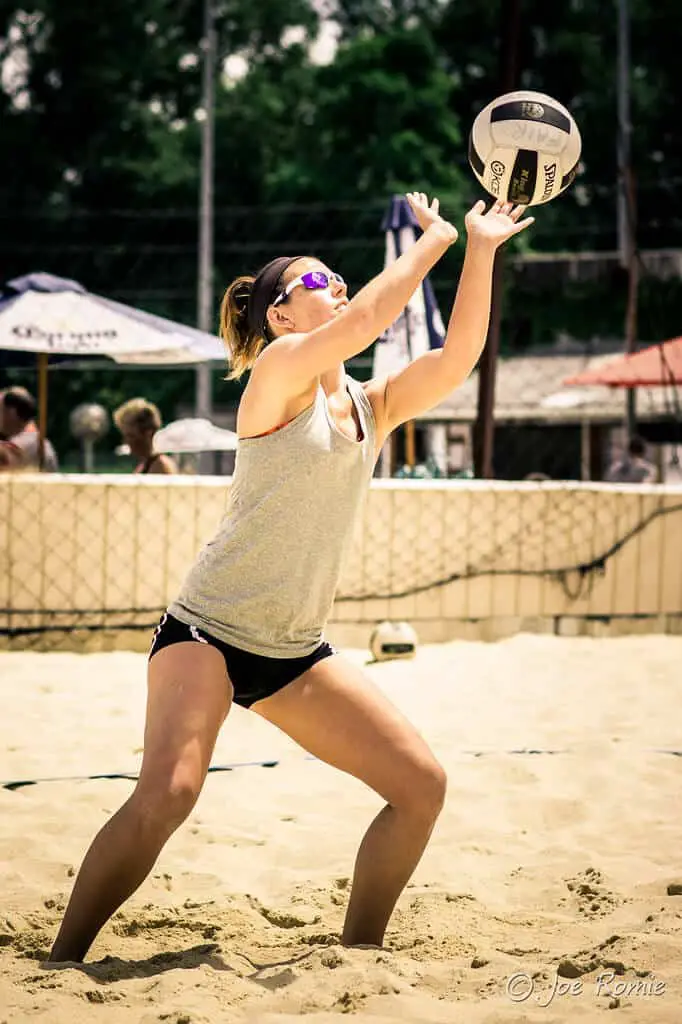
The more commonly taught method is to have both of your hands touching with an open palm facing the ball, this allows you to have a large surface area to contact the ball and often the most accurate method of receiving the ball.
The last method sometimes taught (Although I’m not a huge fan of this move) is what is sometimes referred to as the tomahawk.
The tomahawk is when you have your hands together in almost a praying position (variation to this is where you form a large fist using your two hands) and you use the edges of both your hands where you little finger is located to play the pass.
The reason I am not a huge fan of this move is because you have such a small surface area it can be quite tricky to pull off with any real degree of accuracy.
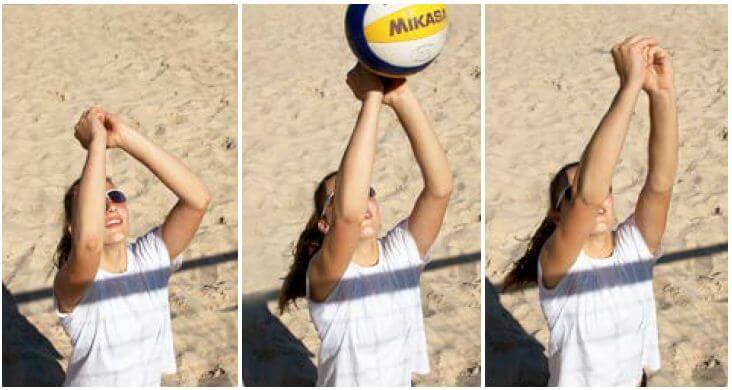
With the above being said, again when you play more volleyball you will likely develop your own twist on these techniques and you will find one that works for you. I know mine personally is a little unorthodox.
Summary
I appreciate that there is a lot of information on this page and that is why right at the start I stressed the importance of picking 2-3 points at one time and working on them until they become comfortable or second nature.
Now if you feel you are an intermediate player and you can’t quite get your passing up to that next level to compete with the best of them I suggest you click on this next article where I am going to go the pro secrets to passing and getting more touches/ digs.
